| Designation: | FV432 |
 |
|---|---|---|
| Manufacturer: | ALVIS PLC | |
| Product type: | Armoured Vehicles | |
| Name: | Tracked armoured personnel carrier |
In the late 1950s, the then GKN Fighting Vehicle Development Division (FVDD) was awarded a contract for the construction of four prototype and 10 trials vehicles of the FV420 unarmoured light tracked vehicle, all of which were delivered by 1958.
Subsequently, GKN's FVDD was awarded the contract for the design and development of the FV432 family of APCs with the first contract covering four prototypes and 13 vehicles for troop trials. In addition, Royal Ordnance (today BAE Systems Land Systems) was awarded a contract to build a further seven troop trials vehicles under GKN's design parentage. All of these vehicles were delivered by 1961.
In 1962, GKN Sankey, which is now BAE Systems Land Systems, was awarded a production contract for the FV432 APC and first production vehicles were completed in 1963. In addition, the company was awarded design and development contracts for the FV431 Light Tracked Load Carrier, which did not enter service, and the FV434 Armoured Fitters' Vehicle. Production continued until 1971, by which time around 3,000 FV432s had been built. The first production models were the Mk 1, followed by the Mk 2 and finally the Mk 2/1. Late production vehicles are distinguishable by the NBC pack in the right side, which is almost flush against the hull rather than protruding as on earlier vehicles.
The FV432 replaced the Saracen (6 × 6) APC in British Army service years ago and was itself replaced in the APC role from 1988 by the Warrior mechanised combat vehicle.
FV432s were deployed to Saudi Arabia and took part in Operation Desert Storm in early 1991. A simple air conditioning system for the FV432 was developed, but this did not enter service due to the rapid end to the conflict.
It was expected that the FV432 would be out of service with the British Army by 2014. In early 2005 it was stated that this date had been extended to beyond 2020.
The all-welded steel hull of the FV432 provides complete protection against small arms fire and shell splinters. The driver sits at the front of the vehicle on the right side and has a single-piece hatch cover that opens to the left. This has an AFV No 33 Mk 1 wide-angle day periscope, which can be replaced for night driving by an L5A1 passive periscope.
The commander sits behind the driver and has a cupola that can be traversed manually through 360°. This cupola has a single-piece hatch cover and three AFV No 32 Mk 1 day periscopes. Mounted on the forward part of the commander's cupola is a 7.62 mm GPMG.
The engine compartment is to the left of the driver with the air inlet (forward), air outlet (rear) louvres in the roof and the exhaust pipe running along the left side of the hull. The complete engine with its oil tanks and filters is mounted on a common subframe, which can be removed from the vehicle as a complete unit and reconnected on the ground by extended cables and fuel lines for testing. The engine compartment is fitted with a FIREWIRE detection system. The engine is coupled to the General Motors Allison Division TX-200-4A semi-automatic transmission, which was built under licence in the UK by Rolls-Royce. This in turn supplies power to the steering unit at the front of the hull via a universally jointed propeller shaft. Access to the steering system for maintenance is through a forward-opening hatch in the glacis plate.
The troop compartment is at the rear of the FV432 with 10 (five a side) infantrymen seated on bench seats that run down either side of the hull. The seats are hinged to the lower side plates on either side of the compartment and fold upwards, enabling the vehicle to carry up to 3,670 kg of cargo. The infantrymen enter and leave the vehicle via a large door in the rear of the hull, which opens to the right and is provided with a vision block. Over the top of the troop compartment is a circular hatch cover that opens to the left and right of the vehicle, each part being hinged in the middle, 'concertina' fashion.
The torsion bar suspension either side consists of five dual rubber-tyred road wheels with the drive sprocket at the front, idler at the rear and two track-return rollers. The first and last road wheel stations have a friction shock-absorber and the upper part of the track is covered by a light sheet-metal covering. The steel tracks are rubber-bushed and fitted with removable rubber pads.
There is an NBC system mounted in the right side of the hull, which provides fresh air via ducts to both the driver and troop compartments.
This model is unarmed and carries four stretcher patients or two stretcher and five seated patients, plus a crew of two. The stretchers are easily loaded and unloaded from the vehicle by means of sliding swivel racks.
This model is fitted internally with two map boards and additional communications equipment. To increase the available working area a penthouse measuring 3.66 × 2.74 × 1.98 m can be quickly erected at the rear of the hull. The command model has a crew of seven and weighs 15,500 kg.
This is the basic vehicle fitted with a now BAE Systems Land Systems 81 mm L16 mortar in the rear of the hull on a turntable which can be traversed through a full 360°. The mortar has a maximum range of 5,660 m and 160 mortar bombs are carried. The vehicle has a crew of six, weighs 16,400 kg and is issued on the scale of six per armoured infantry battalion.
This model is designated the FV434 and is operated by the Royal Electrical and Mechanical Engineers (REME). On the right side of the vehicle is an HIAB crane which has a lifting capacity of 1,250 kg at 3.96 m radius to 3,050 kg at 2.26 m radius. The suspension on the FV434 can be locked when the crane is being used. The FV434 has a crew of four and weighs 17,750 kg fully loaded.
The FV432 is used by the Royal Engineers to tow the Barmine layer, which can lay anti-tank mines at a rate of 600/h.
This is the basic FV432 with a winch installed in the rear troop compartment. The conversion kits were supplied by the British Rail Derby Locomotive Works from 1972. The winch is driven from the Power Take Off (PTO) on the engine transfer case and has both high and low-speed gears. The winch has a maximum pull, using a three part tackle, of 18,299 kg and maximum winching speeds are 18.34 m/min at 6,608 kg and 122.4 m/min at 3,050 kg.
The Royal Artillery used the FV432 modified for a number of specialised roles including artillery fire control.
In addition to using the FV432 for towing the Barmine layer, the Royal Engineers use it to tow the Giant Viper mine clearance trailer. Giant Viper has now been replaced by the more recent Python. The Bar mine system is now being supplemented by the US Volcano system installed on the Shielder chassis, which is a further development of the Stormer.
The Royal Signals use a number of specialised communication versions of the FV432 under the designation FV439, most of which have extensive antenna arrays on the roof. It is also used to house parts of the Wavell and Ptarmigan systems.
The FV438 was originally fitted with a twin launcher for the Swingfire ATGW; these have now been withdrawn from service and some have been fitted with the Wavell Automatic Data Processing (ADP) system, designed to assist formation headquarters' staff to carry out their command and control functions. The Wavell vehicle is usually referred to as the FV435 and is recognisable by the large box mounted on the roof.
The British Army has modified a number of members of the FV432 family as opposition force vehicles. Examples of these include the FV432 with the 30 mm RARDEN turret which has been fitted with a mock-up of the Russian Kolomna KBM 9K11 Malyutka (NATO AT-3 'Sagger') ATGW over the 30 mm cannon so that the vehicle now resembles a Russian BMP-2 infantry combat vehicle. Another model has been modified to resemble the Russian ZSU-23-4 self-propelled air defence system.
Although a number of new armoured fighting vehicles are scheduled to enter service with the British Army in the coming years, it still operates a fleet of 1,500 FV432 series armoured personnel carriers and variants.
These are used for a wide range of roles, such as command post vehicles, mortar carriers as well as carrying very expensive electronics systems.
Many of the subsystems are no longer supportable and its drive train, braking and steering system no longer meets the latest European regulations.
The current FV432 is powered by an old Rolls-Royce K60 2-stroke 6-cylinder multifuel engine developing 240 hp coupled to a TX-200-4A semi-automatic transmission.
In early 2002, the now BAE Systems Land Systems, the design authority for the FV432, completed a FV432 Systems Demonstrator which was first shown in July 2002.
The Systems Demonstrator has a new power pack consisting of a Cummins Engine Company B-series six-cylinder turbocharged diesel engine developing 250 hp, which meets EURO II regulations.
The Cummins engine is coupled to a new Allison X200-4C fully automatic electronically controlled transmission that is already fitted to the latest BAE Systems, Ground Systems Division M113A3 APC. A new cooling system has also been installed.
Not only is the new power pack more compact and lighter, but the vehicle has a greater operating range, higher top speed (with 74 km/h obtained during initial shake down trials) and greater acceleration.
The driver's old tillers have been replaced with a Warrior type yoke for ease of operations. Overall the upgraded FV432 vehicle is some 500 kg lighter, which allows for additional armour for increased battlefield survivability without degrading the automotive aspects of the vehicle.
The first upgraded FV432 Systems Demonstrator was funded by the now BAE Systems Land Systems, Allison and Cummins with the close involvement of the Light Armoured Systems Integrated Project Team from the Defence Logistics Agency (DLO).
Following its unveiling in July 2002, the Infantry Trials and Development Unit (ITDU) at Warminster carried out an initial user assessment of the FV432 Systems Demonstrator.
In mid-2003 BAE Systems Land Systems stated that three additional development prototypes of the upgraded FV432 had been built, and were undergoing trials at the Armoured Trials and Development Unit at Bovington.
In addition, prototypes of the upgraded FV432 have been fitted with a damper suspension system designed in collaboration with Horstmann Defence Systems.
In November 2005, BAE Systems Land Systems was finally awarded a GBP80 million contract by the Defence Logistics Organisation (DLO) for the upgrade of 500 FV432 series AFVs of the British Army.
Under the terms of this contract, BAE Systems Land Systems, as the overall design authority of the FV432 series, is responsible for supplying the subsystems from the original equipment manufacturer to ABRO, which will carry out the upgrade work at its facility at Bovington in Southern England. Project management will be under the leadership of BAE Systems Land Systems.
In July 2006, less than nine months after being awarded the contract to upgrade 500 FV432 series tracked armoured vehicles of the British Army, BAE Systems Land Systems completed the first vehicles on time.
The FV432 upgrade project is the first new programme between BAE Systems Land Systems and ABRO since the signing of the Strategic Partnering Agreement between the two companies in 2005.
The first ten upgraded FV432 vehicles were delivered to the British Army in June 2006 with a further 20 vehicles being converted per month over the next two and a half years. The In Service Date (ISD) was 31 August 2006 when the first 50 vehicles were delivered.
In early 2006 BAE Systems Land Systems was awarded a contract worth up to GBP15 million by the DLO to provide support for this first batch of 500 upgraded FV432.
This contract has two stages with the first 18 months being used to determine an accurate cost profile that will lead onto a five year support period.
The upgraded FV432 is also being fitted with the General Dynamics UK Bowman digital communications system under a separate contract.
The DLO has also awarded BAE Systems Land Systems two separate contracts to upgrade a total of 124 (54 plus 70) FV432 vehicles with additional armour protection for higher battlefield survivability.
As a private venture Thales Land & Joint Systems has developed the Thales Local Situational Awareness System. It was tested in 2005 on an FV432 that was also fitted with the Battlegroup Thermal Imaging System (BGTI), which is already in service with the British Army, and a SWARM Overhead Weapon Station (OWS).
Late in 2006 the British Army deployed the first batch of upgraded BAE Systems Land Systems FV432 Mk 3 Bulldog (uparmoured) AFV to Iraq.
These have been rapidly fielded to meet an Urgent Operational Requirement (UOR) which aims to deploy equipment bypassing the more conventional normal long and all to often time consuming procurement process.
For improved battlefield survivability the FV432 has been be fitted with a recently developed explosive reactive armour (ERA) package to its front and sides.
This provides a high level of protection against a variety of threats including projectiles fitted with a High Explosive Anti-Tank (HEAT) warhead such as that fitted to the widely deployed Russian-designed RPG-7 (Rocket Propelled Grenade) encountered in Iraq. Additional advanced passive armour has been fitted to protect the upper part of the suspension. Other enhancements under this UOR include the installation of an air conditioning system, thermal blanket, protected commanders position (sometimes referred to as the Ned Kelly) and an electronic countermeasure (ECM) system of an undisclosed type to neutralise improvised explosive devices (IED).
Some vehicles are being fitted with a 7.62 mm overhead weapon system originally procured for installation on the Panther command and liaison vehicle.
The first batch of 50 upgraded FV432 Mk 3 vehicles were completed on schedule in August 2006 with final deliveries due in 2008.
The FV430 upgrade project is the first new programme between BAE Systems Land Systems and ABRO since the signing of the Strategic Partnering Agreement between the two companies in 2006.
Prior to going through the upgrade at ABRO the FV432 (and FV434 fitters vehicles) were fitted with the General Dynamics UK Bowman digital communications system under a separate contract
The FV432 Mk 3 Bulldog (uparmoured) is a separate DLO contract to BAE Systems Land Systems which covers the supply of 124 (54 plus 70) FV432 vehicles.
In 2007 BAE Systems Land Systems were awarded an additional contract worth GBP70 million to upgrade a further 400 FV432 to the FV432 Mk 3 standard. This will extend the production of upgraded vehicles through to March 2011. FV432 with enhanced situational awareness.
|
||||||||||||||||||||||||||||||||||||
|
||||||||||||
|
||||||||||||||||||||||||||||||
All contracts...
Related Articles |
|
British Army Takes Delivery of 500th Upgraded Bulldog Infantry Armored Vehicle (27.05.2008) |
|
QinetiQ wins GBP9.48M armoured vehicle 'survivability' contract (18.01.2007) |
|
BAE SYSTEMS Awarded J15 Million Contract To Support Upgraded FV432 Armoured Vehicle (04.04.2006) |
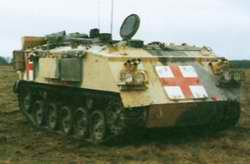 |
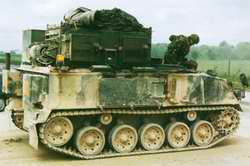 |
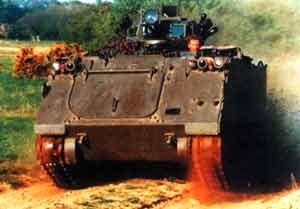 |
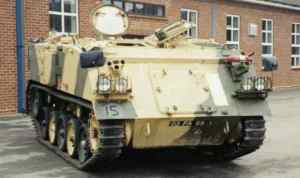 |
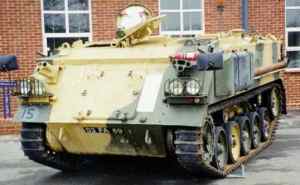 |
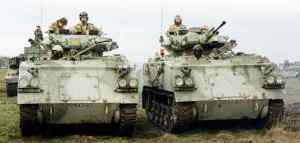 |
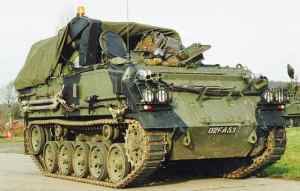 |
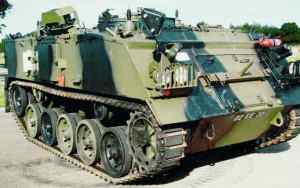 |




